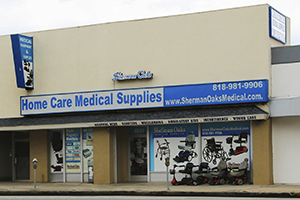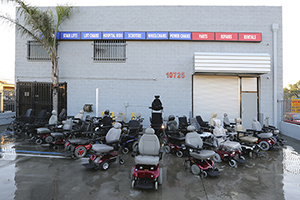Support Surfaces Guide
Often lost in the ongoing conversation about how best to treat pressure ulcers, is a very important concept: prevention. There are many factors that make up a complete pressure ulcer prevention plan, including proper skin treatment and good nutrition. But if pressure is the major cause of pressure ulcers, it makes sense that any prevention plan would address the relief of that pressure.
One way to achieve that is by constantly rotating or repositioning the patient. Equally important, however, is the actual support surface on which the patient is sitting or lying. An effective pressure reducing support surface will allow your body to sink into it. In doing so, the pressure between your body and the surface is distributed over a wider area. In general, the more of your body that is in contact with the support surface, the better.
The following overview will give you a good idea of the surfaces available today, and highlight some of their advantages and disadvantages. How advanced a system you need will depend on your particular medical situation. Will an overlay surface that rests on top of a standard mattress be sufficient? Or will you need an entire mattress replacement? Is cost an issue? Are you in a home care environment? Those are all considerations for your health care professional. Working together you should be able to fond the right system.
Overlays & Mattresses
One decision you and your care provider will have to make is whether to purchase an overlay system or pursue a mattress replacement solution.
Overlays do exactly what their name suggests; they "lay over" a standard mattress to provide increased pressure reduction and protect the bony areas of your body which are most vulnerable to pressure ulcers. In general, they are more portable and less expensive than other options, but there can be issues with "bottoming out", or sinking in so far that your body surface rests against the firmer standard mattress underneath.
In some cases, your nurse or doctor may recommend a replacement mattress made of a pressure reducing material or an actual support system, that replaces the mattress and frame, and may include other components. While replacement mattresses tend to provide greater pressure reduction, they are pricier and bulkier.
Most of the materials below can function as either an overlay or a complete mattress solution.
Types of support surfaces
Foam
The most portable surface type, foam can also be cut into numerous shapes, which makes it a possible solution for wheelchairs or other smaller areas. Foam can also be used as a mattress material. It is very important that the height, density and firmness of the overlay be sufficient to support the weight of the patient, while preventing them from bottoming out. For example, softer foams will envelop a patient's body better, but must be made thicker. Some foam products are even combined with gel, to make them conform even better. Some consider foam overlays a safety concern in that it raises the mattress height even further.
Viscoelastic (Visco)
Viscoelastic is a type of foam support surface that is temperature sensitive. As such, it becomes softer, conforms better and distributes pressure more evenly when in contact with a warm body surface. This is an advantage over traditional, stiffer foam surfaces. In addition, viscoelastic support surfaces gradually mold to the shape of the body lying on the surface, rather than returning to its original shape. This increases the amount of foam in contact with the body, further reducing pressure.
Low-air loss
Low-air loss surfaces are composed of interlocking air pockets or cells that conform to your shape and help take pressure off of the bony areas of your body. An air pump pushes a steady flow of air throughout the device, and replaces any air that may leak out through the surface. It is critical that the overlay is inflated with the right amount of air, which will vary based on the weight of the patient. Some systems will allow different section of the mattress or overlay to be inflated to different pressure levels. Too much air in any one are will only increase the pressure felt by the patient and too little air put the patient at risk of bottoming out.
Dynamic or Alternating Pressure
Dynamic or alternating pressure support surfaces consist of longer air cells arranged side-by-side in columns. The overlay or bed is hooked up to an air pump that alternately inflates certain rows of the overlay. The theory behind the alternating motion is that it shifts pressure to different parts of the body, thereby not allowing any one body area to remain under pressure for a prolonged period. It is also believed that the alternating pressure helps improve lymphatic flow. Some patients find the alternating motion makes them feel uneasy.
Fluid-filled (Gel or water)
These overlays or mattresses are made up of large and small compartments filled with gel or water. The fluid helps disperse the pressure around the bony areas of the patient's body. Both materials are meant to provide pressure reduction for the patient, while not allowing them to bottom out. Most are covered in a vinyl shell, which makes them relatively easy to clean. One concern that occasionally rises for water and gel overlays built without compartments is that when the head of the bed is raised, gravity will cause the water to move down and pool under the patients back and backside.
Air-fluidized
These beds have been available for over 40 years. They consist of about one ton of glass beads sealed in a sheet made of a synthetic material (like polyester or Gore-tex). Warm, high-pressure air is then forced through the beads, causing them take on a fluid state. Air-fluidized beds allow the greatest level of immersion of any surface currentlt available. As much as two-thirds of your body can sink into the bed, which takes pressure off of the bony parts of your body and distributes it adjacent areas. Because of the high cost of air-fluidized systems, you should check with your health care provider to be sure their use is covered under your plan.
Resources:
Krasner, Kane; Chronic Wound Care: A clinical Source Book for HEalthcare Professionals , 1997
Carol Dealy; Managing Pressure Sore Prevention , 1997
Morrison, Moffat, Bridel-Nixon, Bale; Nursing Management of Chronic Wounds , 1997
Brienza, Geyer; Advances in Skin and Wound Care : "Understanding Support Surface Technologies", 2000
Our service area covers most of Southern California including Los Angeles and surrounding cities.
To see a full list of cities covered in our service area please click here.
- Agoura Hills
- Alhambra
- Altadena
- Arcadia
- Arleta
- Artesia
- Avalon
- Azusa
- Baldwin Park
- Bel Air
- Bell
- Bell Gardens
- Bellflower
- Beverly Hills
- Bradbury
- Brentwood
- Burbank
- Cahuenga Pass
- Calabasas
- Camarillo
- Canoga Park
- Carson
- Cerritos
- Chatsworth
- Claremont
- Commerce
- Compton
- Covina
- Cudahy
- Culver City
- Diamond Bar
- Downey
- Duarte
- Eagle Rock
- El Monte
- El Segundo
- Encino
- Gardena
- Glendale
- Glendora
- Granada Hills
- Hawaiian Gardens
- Hawthorne
- Hermosa Beach
- Hidden Hills
- Huntington Park
- Industry
- Inglewood
- Irwindale
- Kagel Canyon
- La Canada
- La Crescenta
- La Habra Heights
- La Mirada
- La Puente
- La Tuna Canyon
- La Verne
- Lake Balboa
- Lake View Terrace
- Lakewood
- Lancaster
- Lawndale
- Lomita
- Long Beach
- Los Angeles
- Lynwood
- Malibu
- Manhattan Beach
- Marina Del Rey
- Maywood
- Mission Hills
- Monrovia
- Montebello
- Monterey Park
- Montrose
- NoHo Arts District
- North Hills
- North Hollywood
- Northridge
- Norwalk
- Oak Park
- Olive View
- Oxnard
- Pacific Palisades
- Pacoima
- Palmdale
- Palos Verdes
- Panorama City
- Paramount
- Pasadena
- Pico Rivera
- Pomona
- Porter Ranch
- Redondo Beach
- Reseda
- Rolling Hills
- Rosemead
- San Dimas
- San Fernando
- San Gabriel
- San Marino
- Santa Barbara
- Santa Clarita
- Santa Fe Springs
- Santa Monica
- Sepulveda
- Shadow Hills
- Sherman Oaks
- Sierra Madre
- Signal Hill
- Simi Valley
- South El Monte
- South Gate
- South Pasadena
- Stonehurst
- Studio City
- Sun Valley
- Sunland
- Sylmar
- Tarzana
- Temple City
- Thousand Oaks
- Toluca Lake
- Toluca Woods
- Topanga
- Torrance
- Tujunga
- Valencia
- Valley Glen
- Valley Village
- Van Nuys
- Ventura
- Vernon
- Walnut
- Warner Center
- West Covina
- West Hills
- West Hollywood
- West Toluca
- Westlake Village
- Westwood
- Whittier
- Winnetka
- Woodland Hills




 Accreditation Commission for Health Care
Accreditation Commission for Health Care
 RESNA Accredited
RESNA Accredited





